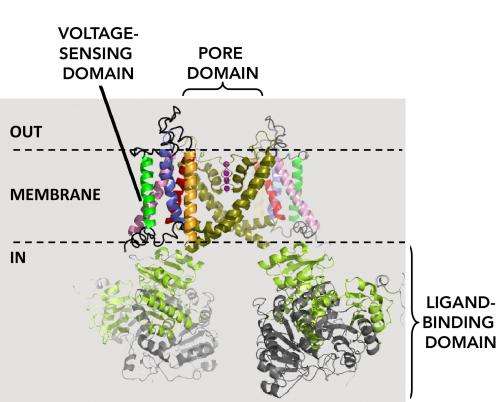A model-free way to characterize polymodal ion channel gating

Two studies in The Journal of General Physiology (JGP) help pave the way for a "shortcut" model-free approach to studying activation of "polymodal" ion channels—channels that open in response to multiple stimuli.
Transmembrane ion channels respond to various physiological stimuli to regulate numerous cellular functions. Different classes of channels respond to different types of stimuli; some channels, for instance, respond to changes in membrane potential whereas others are activated by ligand binding. Polymodal channels integrate different cellular signals, enabling them to mediate a more precise and flexible physiological response. Understanding the mechanisms involved in polymodal channel activation has been a challenge, however, in part because of the complexity of the models required.
Now, two studies in the January issue of JGP use straightforward thermodynamically rigorous analysis to parse the free energy of polymodal voltage- and ligand-dependent ion channels. In one study, University of Wisconsin–Madison researchers Sandipan Chowdhury and Baron Chanda examine the BK channel—a channel activated by both changes in membrane potential and calcium binding to an intracellular domain. In the second study, Daniel Sigg (dPET Professional Services) explores gating of polymodal ion channels in general. Specifically, the authors show how to use G-V (conductance-voltage), Q-V (charge-voltage) and conductance vs. ligand concentration measurements to extract the free energies of interaction of the modules of a polymodal channel that respond to these distinct modalities
This new approach opens the door for a model-independent way to studying ion channel gating, which could be useful both for constraining future atomic-scale models of channel gating, and in understanding the disruptions that result from disease causing genetic mutations.
More information: Chowdhury, S., and B. Chanda. 2013. J. Gen. Physiol. doi:10.1085/jgp.201210860
Sigg, D., et al. 2013. J. Gen. Physiol. doi:10.1085/jgp.201210859
Yifrach, O. 2013. J. Gen. Physiol. doi:10.1085/jgp.201210929















